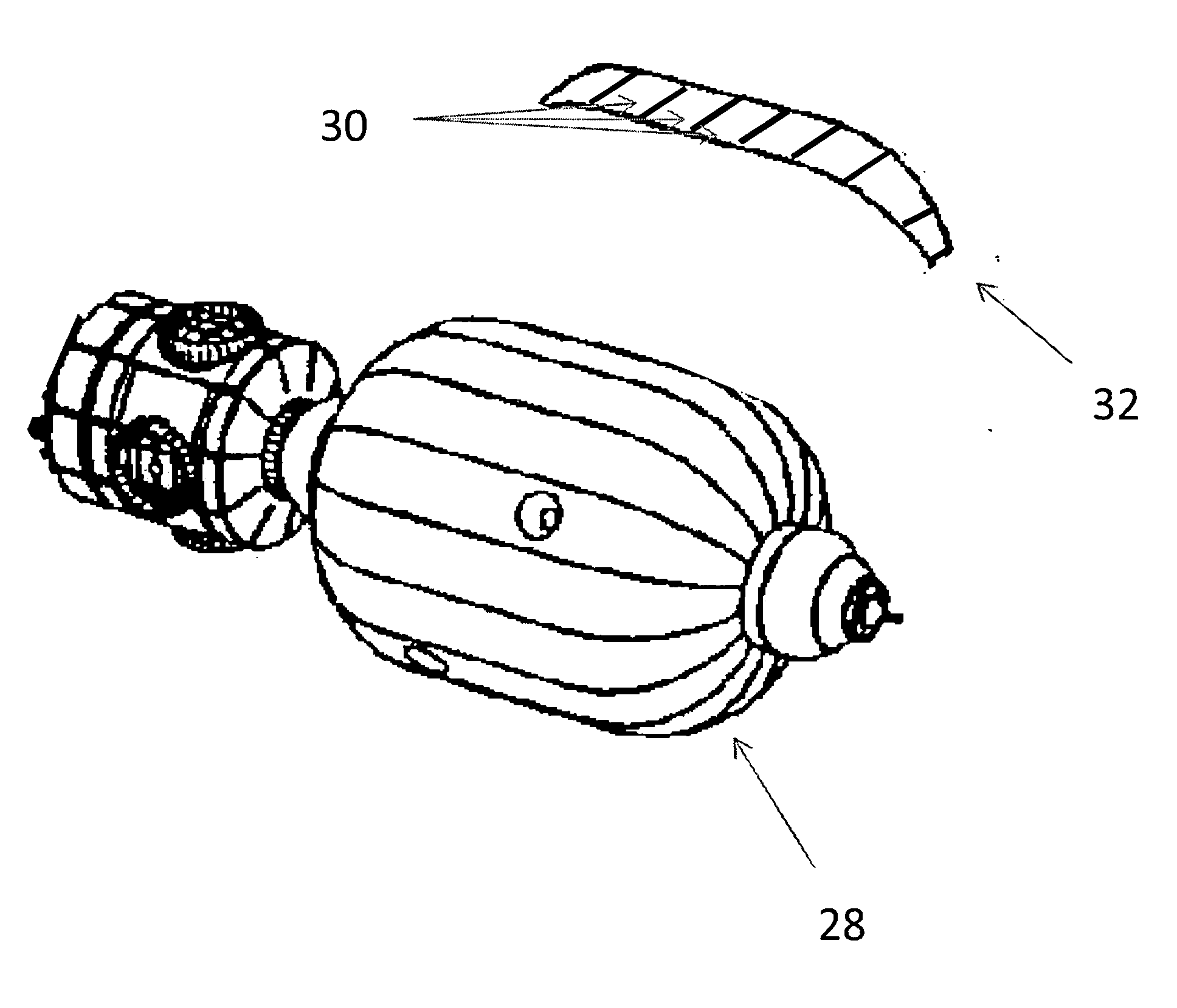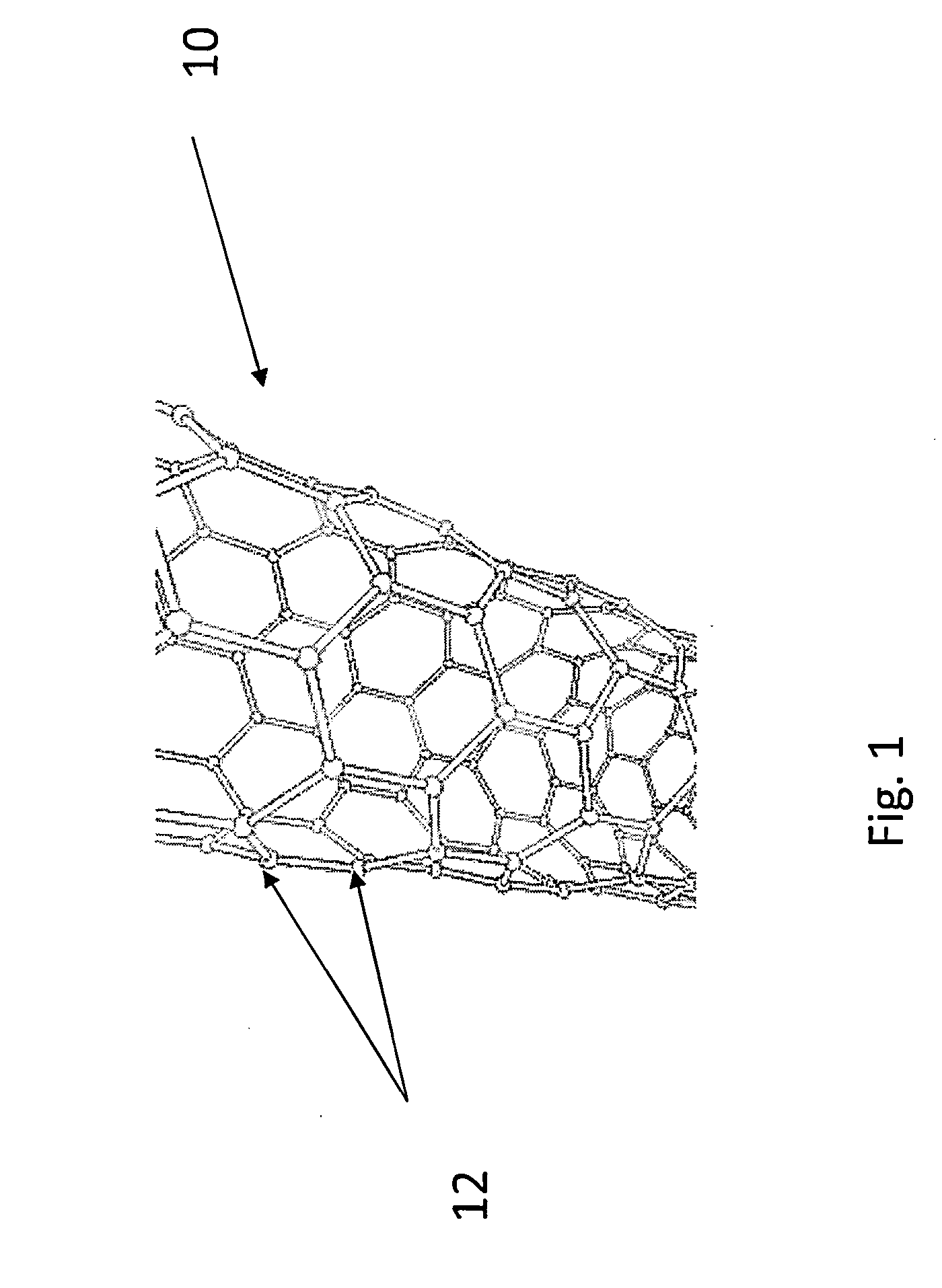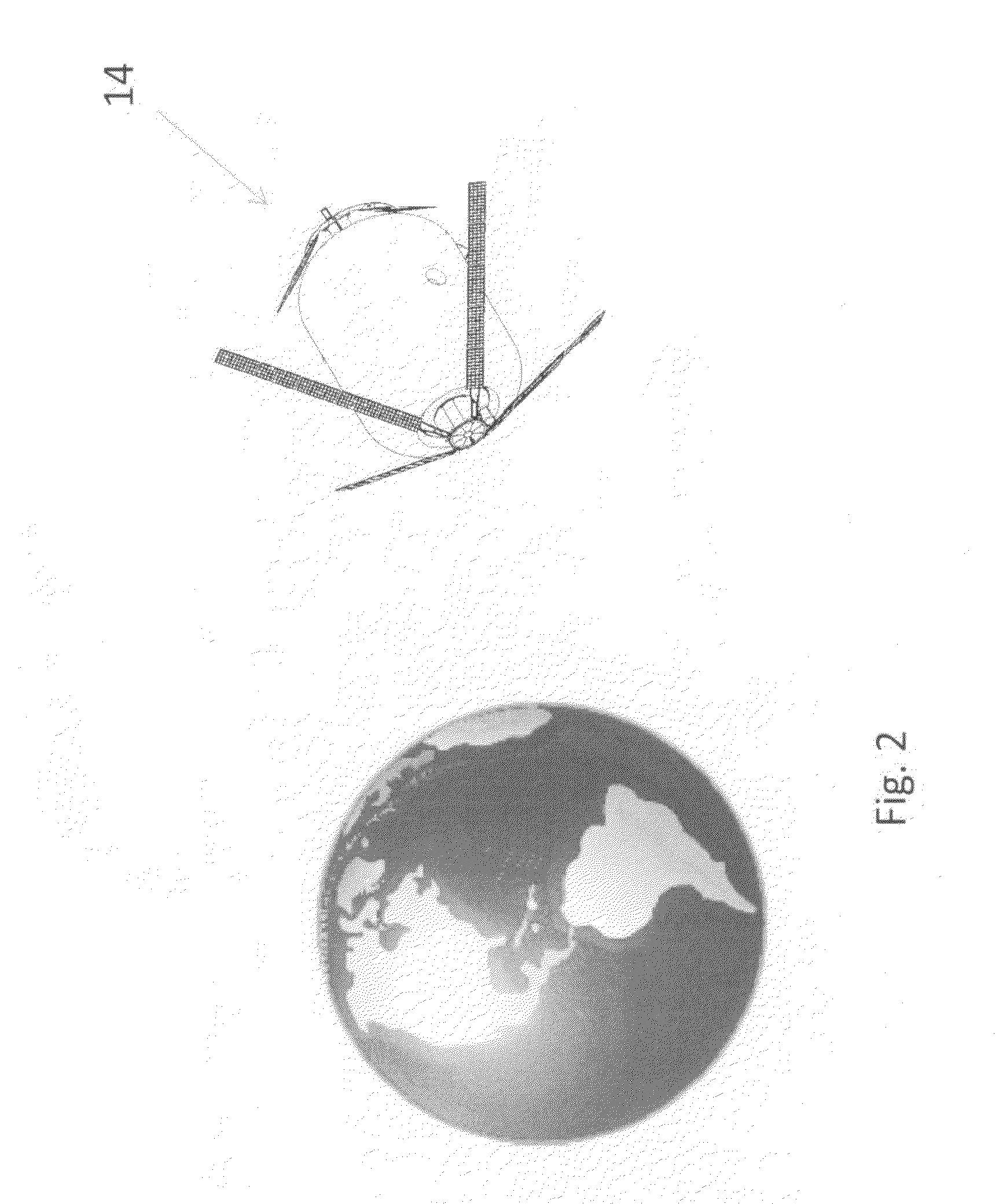Spacercraft Shield
a shield and spacecraft technology, applied in the field of shields, can solve the problems of spacecrafts being bombarded with space debris, shells more susceptible to subsequent failure, and loss of a habitable pressurized environmen
- Summary
- Abstract
- Description
- Claims
- Application Information
AI Technical Summary
Benefits of technology
Problems solved by technology
Method used
Image
Examples
Embodiment Construction
[0017]One aspect of the present invention is the use of carbon nanotubes (CNTs) as a bumper in a spacecraft shield for a Whipple type configuration. CNTs are cylindrical in shape and can have a length-to-diameter ration of up to approximately 132,000,000:1.
[0018]CNTs also have a strength between 10-60 GPa (gigapascals), which is much higher than steel. Even so, the specific density of CNTs is between 1.3-2 while steel is 7.8 making CTNs attractive for space deployment. CNTs can take numerous shapes such as single walled or multi-walled.
[0019]FIG. 1 identifies the general structure of a CNT 10, which is comprised of carbon atoms 12 bonded together. FIG. 2 identifies a space deployed facility 14 for producing carbon nanotubes. The facility 14 can be a spacecraft suitable for human habitation. In the embodiment identified, the facility 14 is an inflatable spacecraft for human use. In this figure, the spacecraft 14 is in orbit about the Earth.
[0020]The carbon nanotubes can be grown by t...
PUM
 Login to View More
Login to View More Abstract
Description
Claims
Application Information
 Login to View More
Login to View More - R&D
- Intellectual Property
- Life Sciences
- Materials
- Tech Scout
- Unparalleled Data Quality
- Higher Quality Content
- 60% Fewer Hallucinations
Browse by: Latest US Patents, China's latest patents, Technical Efficacy Thesaurus, Application Domain, Technology Topic, Popular Technical Reports.
© 2025 PatSnap. All rights reserved.Legal|Privacy policy|Modern Slavery Act Transparency Statement|Sitemap|About US| Contact US: help@patsnap.com



